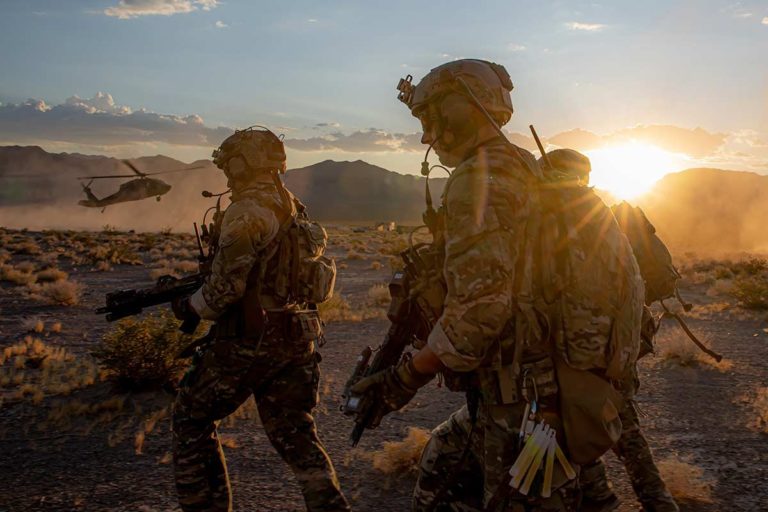Troops at Uzbek Base (K2) Exposed to Multiple Hazards

CCK Law: Our Vital Role in Veterans Law
United States special operations forces who deployed to a military site in Uzbekistan shortly after the 9/11 attacks found pond water that glowed green, “black goo” oozing from the ground, and signs warning “radiation hazard”. Years later, veterans are suffering from serious and fatal illnesses, including cancer.
About the Karshi-Khanabad (K2) Base
Karshi-Khanabad, known as K2, was an old Soviet base leased by the United States from the Uzbek government just weeks after the 9/11 attacks. The base was located a few hundred miles from al Qaeda and Taliban targets in northern Afghanistan. The U.S. military used K2 because it had few other good options during the immediate response to 9/11. The base became a critical hub in the early days of the war to provide airdrops, medical evacuations, and airstrike support to U.S. ground forces in Afghanistan. However, K2 was contaminated with chemical weapons remnants, radioactive processed uranium, and other hazards, according to documents obtained by McClatchy (a political news outlet).
According to a 2015 Army study of the base, at least 61 of the men and women who served at K2 had been diagnosed with cancer or died from the disease. However, that number may not include the special operations forces deployed to K2, who were likely not counted due to the secrecy of their missions. Such veterans have faced difficulties in getting VA to cover their medical costs. Some of those veterans who served at K2 have reportedly planned to submit a letter to Congress asking for help. So far, these veterans have not received any assistance from VA or the Department of Defense (DoD).
Potential Hazards at K2
The DoD knew that K2 was toxic from the start, based on documents obtained by McClatchy that are just now being reported publicly for the first time. After Uzbek workers who were preparing the ground for arriving U.S. forces in October 2001 fell ill, U.S. Central Command directed an intelligence review of the hazards at the base. The classified report dated November 6, 2001 stated, “ground contamination at Karshi-Khanabad Airfield poses health risks to U.S. forces deployed there”. The report also found the “tent city” the military was building at K2 – including tents for sleeping, eating, showering, and working – were “in some cases directly on top of soil that probably was contaminated” by four hazards:
- Missile storage facility that exploded in June 1993: “Ground contamination from the explosion, and subsequent expulsion of missile propellant throughout the area is very likely.”
- Abandoned fuel storage facility; and
- Abandoned aircraft maintenance facility: Identified as the likely source of the “black goo” which the report said “is most likely a combination of oils, hydraulic fluids, glues, solvents, paints, and lubricants.”
- Runoff from a chemical weapons decontamination site: Affected the northeast corner of the tent city.
A separate Army environmental health study of K2 conducted in November 2001 found small areas of dirt contaminated with asbestos and “low level radioactive processed uranium, both from the destruction of Soviet missiles”. Additional assessments were conducted, one of which found pools of solvents about three feet underground.
Veterans Seeking Help from VA and DoD
Years after their deployments, as K2 veterans approached the DoD and VA for help, they met a defense health establishment trained to doubt them. McClatchy obtained an undated, 3-page “Information for Health Care Staff” guide published by the Pentagon’s Deployment Health Clinical Center. This guide instructs staff members to communicate that “there were no K2 exposures of health consequence”. Furthermore, “some may believe they were exposed to dangerous chemicals and that they have not been told the truth,” the guide states. VA responded to McClatchy’s follow-up inquiries concerning the number of cancers among the service members based at K2 with a statement saying, “there is no indication of increased cancer rates among veterans who served at K2, which is why cancer is not a presumptive condition for veterans who served in that area.” A presumptive condition is any medical issue that VA has acknowledged as likely connected to a veteran’s military service. Importantly, presumptive service connection can be the difference between veterans paying for health care expenses on their own or having VA cover the cost.
DoD Reportedly Addressed K2 Contamination Concerns
By 2002, DoD reported that K2’s contamination issues had been addressed by new soil and gravel overlays, caps on suspected vapor areas, and fencing. DoD reported that the uranium posed minimal health risk and the radiation hazard was low; however, this did not align with service members’ experiences. In November 2001, service members were asked to help dig a trench in tent city to keep the flood water out. In doing so, they dug down to a 250-pound buried explosive. From there, warning signs were put up to indicate the chemical weapons and radiation hazards present within these locations.
Concerned Doctors
Military doctors started raising concerns about the number of personnel who served at K2 being diagnosed with cancer. One even wrote to VA in 2009, asking officials to look deeper into the matter. In 2015, the Army published an in-depth look at illnesses reported at the base, prompted by a number of U.S. Army Special Operations Command forces at K2 who had developed various types of cancer. Despite the Army Special Operations Command requesting the review, “special operations forces personnel could not be identified,” the study reported. As such, it was “likely” that the roster of 7,005 US service members who served at K2 did not include these service members or their cancers. Still, among the conventional forces at the base, the study found 11 reported cancers among service members who were 25 years old or younger when they were stationed at K2, including one brain cancer. There were 50 cancers reported among service members who were older than 25 during their deployment, including four brain cancers. VA was provided a copy of the study and responded that it did not change their position. Ultimately, VA stated it would support the continued monitoring of veterans health status.
Depleted Uranium Exposure
VA also provided a fact sheet on K2 that said “long-term adverse health effects would not be expected from depleted uranium contamination based on site assessments and the proper use of protective measures by personnel.” However, K2 veterans remember how the DoD moved soil to create a raised bank of land, which exposed layers of contaminated soil that was then further dispersed by floods and wind. This further contributed to a number of health issues according to K2 veterans.
Overall, K2 veterans are continuing to face serious illnesses and a lack of acknowledgement from both VA and DoD.
About the Author
Share this Post
